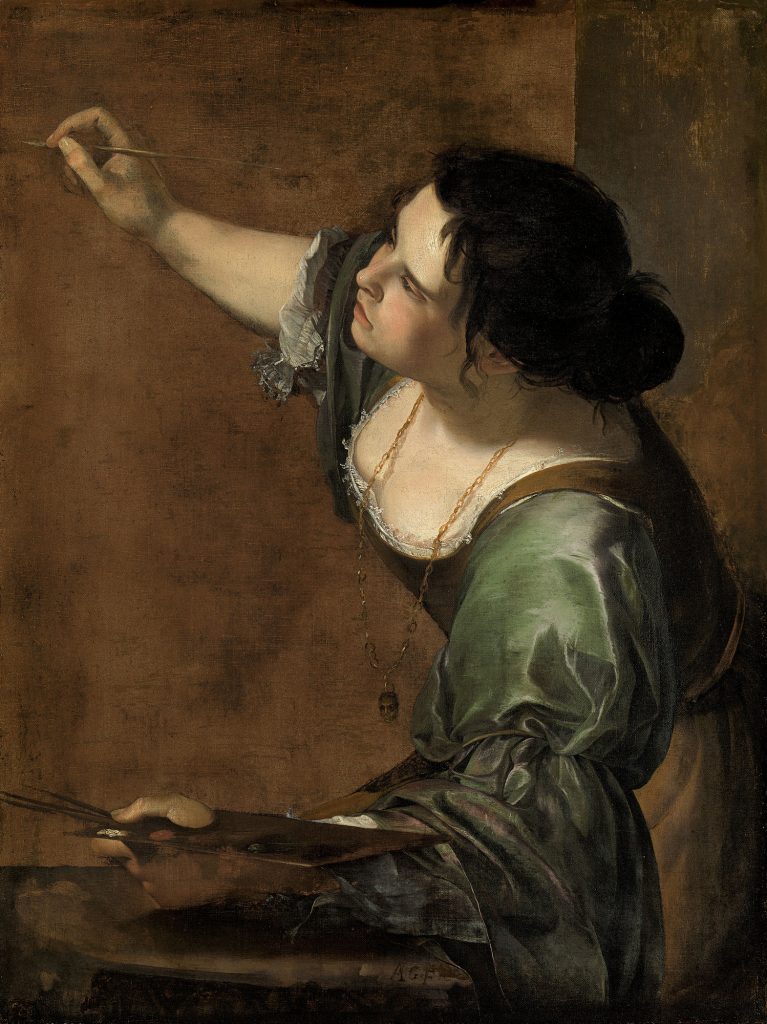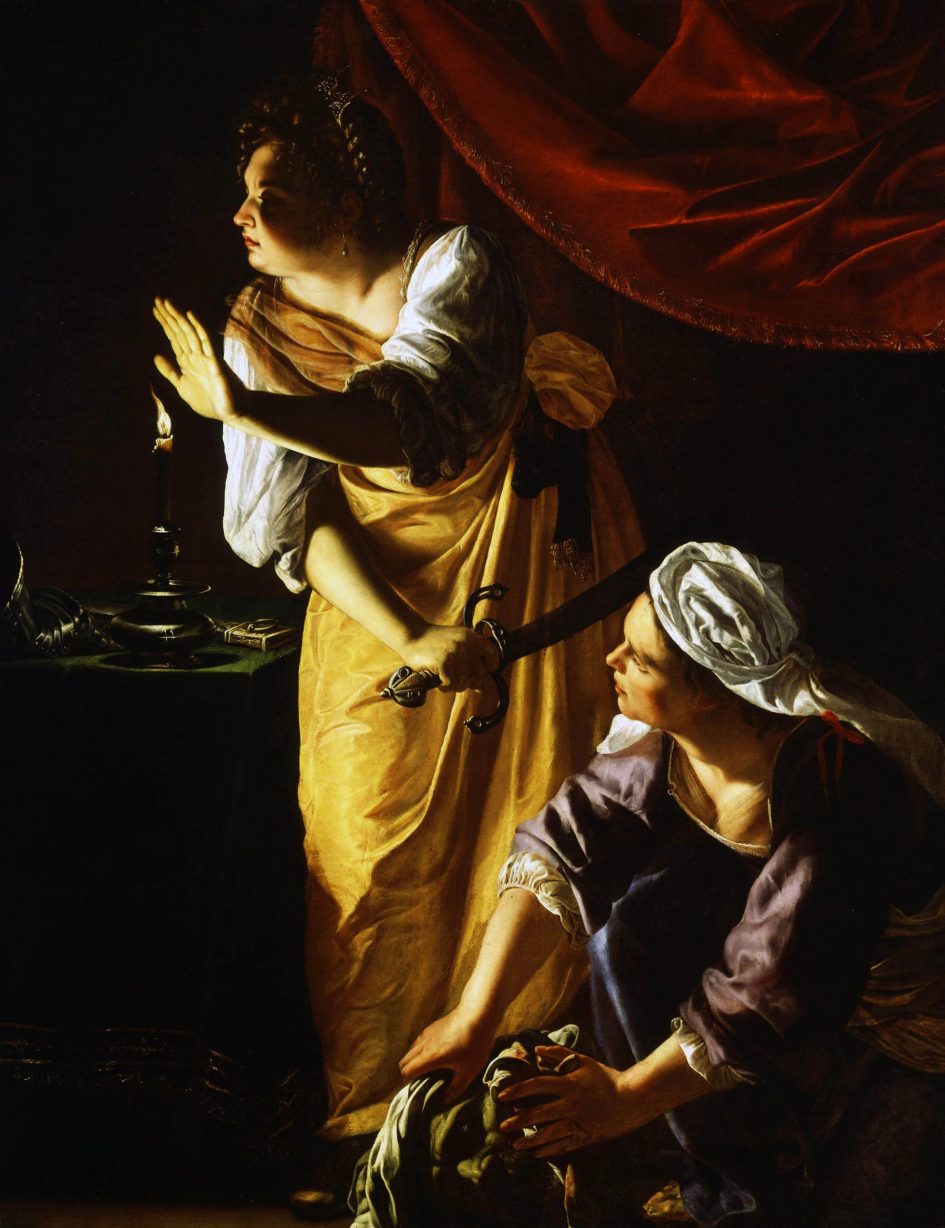An Italian painter of the Baroque period. In a time where women were usually not allowed to work, especially in the field of art, Gentileschi stood out. She began working as a professional artist at the age of only 15. She is recognized for her natural depictions of women and scenes of drama. She was also the first woman to be inducted to the Italian Academy, the highest honour for a painter at that time.

This painting was purchased by King Charles I, which further emphasizes her prominence. It is both highly impressive and inspiring that a woman of that era was able to receive such acclaim and notoriety for her skills.

An example of a Bible story painting, which was a common subject for Gentileschi’s works. Here Gentileschi really captures an uncomfortable mood, as the elders bother her.


The two paintings above depict the Bible story of Judith beheading Holofernes to save the Jewish people. In most depictions, including Caravaggio’s above, Judith is depicted as weak and delicate, despite the gruesome act she is committing. Gentileschi, on the other hand, depicts Judith as a badass, as she really gets in there and cuts his head off.
When she was a young woman, she was raped by one of her father’s colleagues. Her father had a court case against him, in which Gentileschi testified, and they won. For a long time, unfortunately, historians would focus on her rape, rather than her artistic achievements. Now, however, she is finally being recognized as one of the most progressive and accomplished artists of her time.

November 4, 2020 at 4:58 pm
Arsheya,
Even though you posted on Gentileschi when I will be lecturing on her later, you still did a good job with her. I like your research as well as your personal feelings about the artist. I also like the comparison between Caravaggio’s and her depiction of Judith beheading Holofernes. Her’s is much more dramatic.
Jeff
November 10, 2020 at 9:54 pm
Arsheya,
I’m getting in touch with everyone today to give them their real marks for the mid term quiz. You scored a 44/50 which translates to an A. Super Congrats.
Jeff
December 4, 2020 at 1:09 am
Arsheya,
Excellent presentation on Lichtenstein! Good background information and citing wher he’s placed in Pop Art. Of course your choice of him was not surprising with your interest in Comics. You have an obvious connection to the artist. Like that you have an opinion on his work compared to the comics he chose to paint from. Well Done!
10/10
Jeff
December 5, 2020 at 7:01 pm
Arsheya,
I’m in your blog and looking for post #4 but don’t see it here. I remember you were having issues with this and had to send me post #3 on Millet through Cap email correct? Anyhow bring me up to date on where you are at here.
Jeff
December 9, 2020 at 9:08 pm
Arsheya,
Just following up on my last message to you. Wondering about the last two blog posts?
Jeff
December 12, 2020 at 7:19 pm
Hi Jeff,
I did submit blog post 4 as a word document on teams; I’m not sure why you wouldn’t be able to see it. But since then, I’ve regained access to my eportfolio, so if you’d like, I could paste what I wrote into a blog post on here.